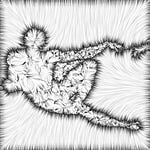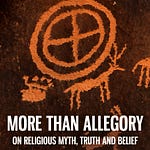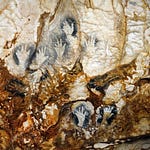Mungo Manic is a pseudo-anonymous researcher and commentator on X who fell down the rabbit hole of Australian prehistory. His posts have drawn attention to how identity politics and cultural sensitivities in Australia have led to the reburial—and loss—of valuable archaeological finds. In this episode of Vectors of Mind, we discuss the complex intersection of politics, identity, and scientific inquiry, as well as Mungo Manic's personal efforts to document and preserve Australia's ancient past. And, of course, we explore the fascinating story of the bullroarer—an ancient ritual instrument central to Aboriginal ceremonies and a topic of shared interest.
Below are the show notes, as well as key clips and referenced articles if you scroll to the bottom.
Show Notes
Introduction
Explanation of Mungo Manic’s pseudonym: homage to “Mungo Man,” Australia's oldest fossilized human found at Willandra Lakes.
Discussion on the reburial of Mungo Man and the intersection of archaeology with political activism.
Key Themes
1. Politics and Archaeological Science
Examination of tensions between indigenous rights activism and archaeological preservation in Australia.
Comparison to historical conflicts like the Catholic Church and Copernican astronomy.
Frustrations about the loss of archaeological evidence due to political pressures.
2. Challenges of Information Access
Discussion on difficulties finding accurate and detailed information on Australian prehistory.
Mention of rare PDFs and physical books sourced by Mungo Manic.
3. Reburial of Fossil Remains
Overview of the current situation: thousands of human fossils in Australia, some dated back 75,000 years, have been systematically reburied.
Concerns over loss of valuable genetic and archaeological data.
4. Aboriginal Identity and Politics
Analysis of political organization among Aboriginal communities.
Clarification on the complexity and political nature of "Aboriginal" identity.
Discussion on figures like Bruce Pascoe and the dynamics of self-identification versus ancestral lineage.
5. Archaeological Science Suppression
Reports from archaeologists about the career risks associated with questioning mainstream narratives.
Mention of how most archaeologists interested in origins have left the field due to political pressures.
6. Australian Rituals and Spirituality
Extensive exploration of Australian Aboriginal rituals featuring themes of secrecy, death and rebirth, and initiation rites.
Analysis of the bullroarer, its origins, and symbolic significance.
Discussion on diffusion theories of cultural and linguistic elements from outside Australia.
7. Linguistics and Cultural Diffusion
Examination of widespread language similarities across Australia, especially pronouns.
Mention of a hypothetical proto-Australian language spreading from the North.
Mythological references supporting theories of cultural diffusion.
8. Technological and Cultural Evolution in Australia
Distinction between cultural phases in Australia (large stone flakes vs. small tool tradition around 8,000 years ago).
Evidence of technological shifts starting in northern Australia.
Controversial claims about cultural continuity in Australian history.
9. Bradshaw Paintings and Ancient Art
Exploration of the mysterious Bradshaw (Gwion Gwion) paintings in northwest Australia.
Analysis of stylistic shifts in ancient rock art.
10. Genetic Evidence and Human Evolution
Mention of genomic studies and gaps in DNA research on Australian foragers.
Proposal by Mungo Manic to privately source and publish DNA data.
11. Recommendations and Future Directions
Books Recommended:
"The Life of Buckleaf" by Morgan (1852).
Works by early anthropologists (Spencer & Gillen, Walter Roth, Daisy Bates).
Journals of German explorer Leichhardt.
Personal projects:
Building a physical library of rare books and biological samples.
Advocating for independent genomic research on Australian forager populations.
Highlighting neglected scientific theories and findings online.
12. Philosophy on Science and Truth
Importance of maintaining objectivity, promoting open inquiry, and protecting scientific integrity.
Critique of institutional science becoming overly politicized or ideological.
Closing Thoughts
Emphasis on independent research, scientific transparency, and overcoming censorship.
Encouragement for broader public engagement and discourse in controversial historical and scientific topics.
Contact and Further Engagement
Mungo Manic available on X, sharing rare resources, insights, and ongoing research.
Key Clips
Referenced Articles
Proto-Australian: New evidence confirms our Indigenous languages have a common source, but how they spread remains a mystery
“Proto-Australian was most likely spoken about 6,000 years ago in the Top End of the Northern Territory. When it spread across mainland Australia it displaced all the other languages spoken before.
One big question is how this spread took place. Language spread is usually associated with population movements or economic and technological change. But there is no clear evidence for population movement or economic and technological change in the past 10,000 years.”
That last sentence is a lie. There were all sorts of changes during that time period. All emanating from the North, and some (like x-ray-style art, dingos, and bullroarer mystery cults) coming from Eurasia.














